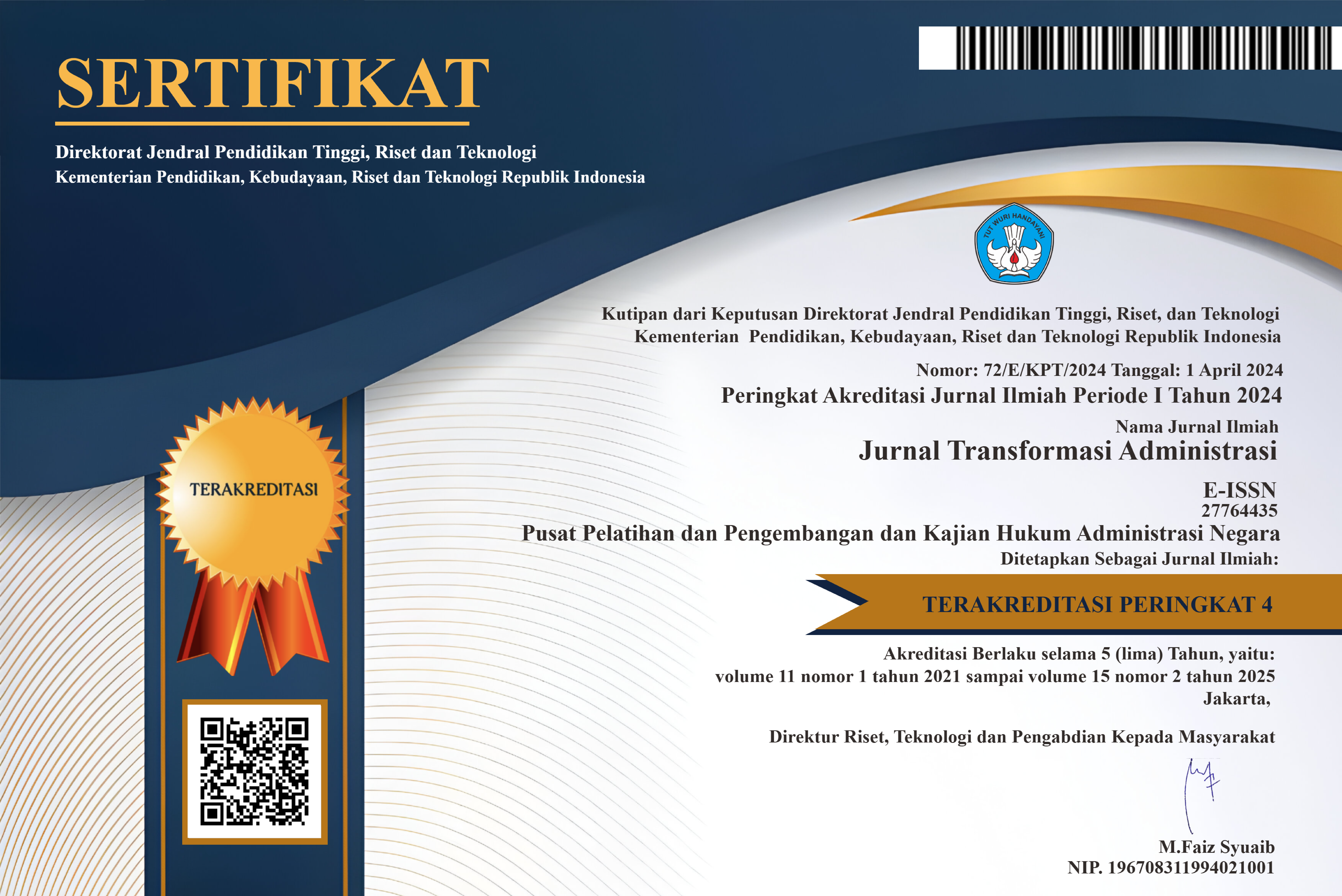The Determinant Factor Of Public Participation In Village Development: Challenge For The Village Law
Keywords:
decentralization, participation, the village lawAbstract
This study aims to examine the effect of individual characteristics on public participation in Indonesia. This study uses data from IFLS 5 that was conducted in 2014 and 2015 with total sample is 31.410. This study uses a linear probability model (LPM) to estimate the probability of a person participate in village's activities such as community meetings and development activities. The results shows that educated person is more likely to attend village's meetings by 8,5 percent than less-educated person. However, regarding development activities, education has a negative effect on participation. Further, gender is an crucial issue regarding participation because a woman tends to be less involved in village activities. Overall, the awareness of people on village development is relatively low because less than 50 percent respondents realize or participate in village activities. Therefore, there is a need to improve the mechanism and strategies for public participation as ordered by the Village Law.
References
Bardosh, K. (2015). Achieving “Total S anit a tion” in Rur a l Afri c an Geographies: Poverty, Participation and Pit Latrines in Eastern Zambia. Geoforum, 66, 53 – 63. https://doi.org/10.1016/j.geoforum.2015.09.004.
Bibby, P. (2013). Urban and Rural Area Definitions for Policy Purposes in England and Wales: Methodology (v1.0), Government Statistical Service, GSS. p.36.
Blair, Harry (2000), 'Participation and Accountability at the Periphery: Democratic Local Governance in Six Countries', World Development 28 (1): 21–39.
Chambers, R. (2013). Rural Development: Putting the Last First. Routledge, New York, p. 256.
Chromy, P. Jancak,P. Marada, M.(2011). Rural Areas - Living Space: Regional Differences in the Perceptions of Reprsentative of Municaplities in Czechia Regarding Rural Area. Geografie, 116, 23-45.
Dhokhikah, Y., dkk. (2015). Community participation in household solid waste reduction in Surabaya, Indonesia. Resources, Conservation and Recycling, 102, 153–162. https://doi.org/10.1016/j.resconrec.2015.06.013.
Gottlieb, J. (2016). Why Might Information Exacerbate the Gender Gap in Civic Participation? Evidence from Mali. World Development, 86, 95–110. https://doi.org/10.1016/j.worlddev.2016.05.010.
Khan, S. A. (2016). International Review of Public Administration Decentralization and Poverty Reduction: A Theoretical Framework for Exploring The Linkages Exploring The Linkages, 4659(November). https://doi.org/10.1080/12294659.2013.10805256.
Khan, S. A. (2013). Decentralization and poverty reduction: A theoretical framework for exploring the linkages. International Review of Public Administration, 18(2), 173–210. https://doi.org/10.1080/12294659.2013.10805256.
Malik, S., dkk. (2006). Fiscal decentralisation and economic growth in Pakistan. Pakistan Development Review, 45(4). https://doi.org/10.1080/13547860.2011.539397.
Manor, James. (1999). The political economy of democratic decentralization. Washington, DC: The World Bank.
Murshed, S. dkk,. (2009). Is Fiscal Decentralization Conflict Abating? Routine Violence and District Level Government in Java, Indonesia. Oxford Development Studies, 37(4), 397–421. https://doi.org/10.1080/13600810903305224.
Nurlaila, I., dkk. (2015). Public Participation: Energy Policy Aspect to Support Rural Electrification Program in West Java. Procedia - Social and Behavioral Sciences, 168, 321–327. https://doi.org/10.1016/j.sbspro.2014.10.237.
Okoro, T. (2016). Diverse Talent: Enhancing Gender Participation in Project Management. Procedia - Social and Behavioral Sciences, 226(October 2015), 170–175. https://doi.org/10.1016/j.sbspro.2016.06.176.
Peluso, N. L. (2007). Violence, Decentralization, and Resource Access in Indonesia. Peace Review, 19(1), 23–32. https://doi.org/10.1080/10402650601181840.
Prasisca, Y., & Sutikno, F. R. (2015). Gender Equality and Social Capital as Rural Development Indicators in Indonesia (Case: Malang Regency, Indonesia). Procedia - Social and Behavioral Sciences, 211 (September), 370 – 374. https://doi.org/10.1016/j.sbspro.2015.11.048.
Rega, C., & Baldizzone, G. (2015). Public participation in Strategic Environmental Assessment: A practitioners' perspective. Environmental Impact Assessment Review, 50, 105 – 115. https://doi.org/10.1016/j.eiar.2014.09.007.
Rock, A., dkk. (2016). Social networks, social participation, and health among youth living in extreme poverty in rural Malawi. Social Science & Medicine, 170, 55–62. https://doi.org/10.1016/j.socscimed.2016.10.005.
Sinurat, H.P, & Sumanti, R. (2016). Penguatan Kapasitas Aparatur Pemerintah Desa.Jurnal Transformasi Administrasi, 6, 1131-1147
Straka, J., & Tuzová, M. (2016). Factors Affecting Development of Rural Areas in the Czech Republic: A Literature Review. Procedia - Social and Behavioral Sciences, 220(March), 496–505. https://doi.org/10.1016/j.sbspro.2016.05.525
United States Department of Agriculture - USDA. (2006). Rural development. [2015 - 12 - 10]. Available at http://goo.gl/iwFBDw.
Vel, J. A. C., & Bedner, A. W. (2015). Decentrali sation and village governance in Indonesia: the return to the nagari and the 2014 Village Law. The Journal of Legal Pluralism and Unofficial Law, 47(3), 493–507. https://doi.org/10.1080/07329113.2015.1109379.
Yusuf, A. A., & Sumner, A. (2015). Growth, Poverty and Inequality under Jokowi. Bulletin of Indonesian Economic Studies, 51(3), 323–348. https://doi.org/10.1080/00074918.2015.1110685.
Peraturan
Undang-Undang Nomor 6 Tahun 2014 tentang Desa.
Sumber Data
http://www.rand.org/labor/FLS/IFLS/ifls5.html















